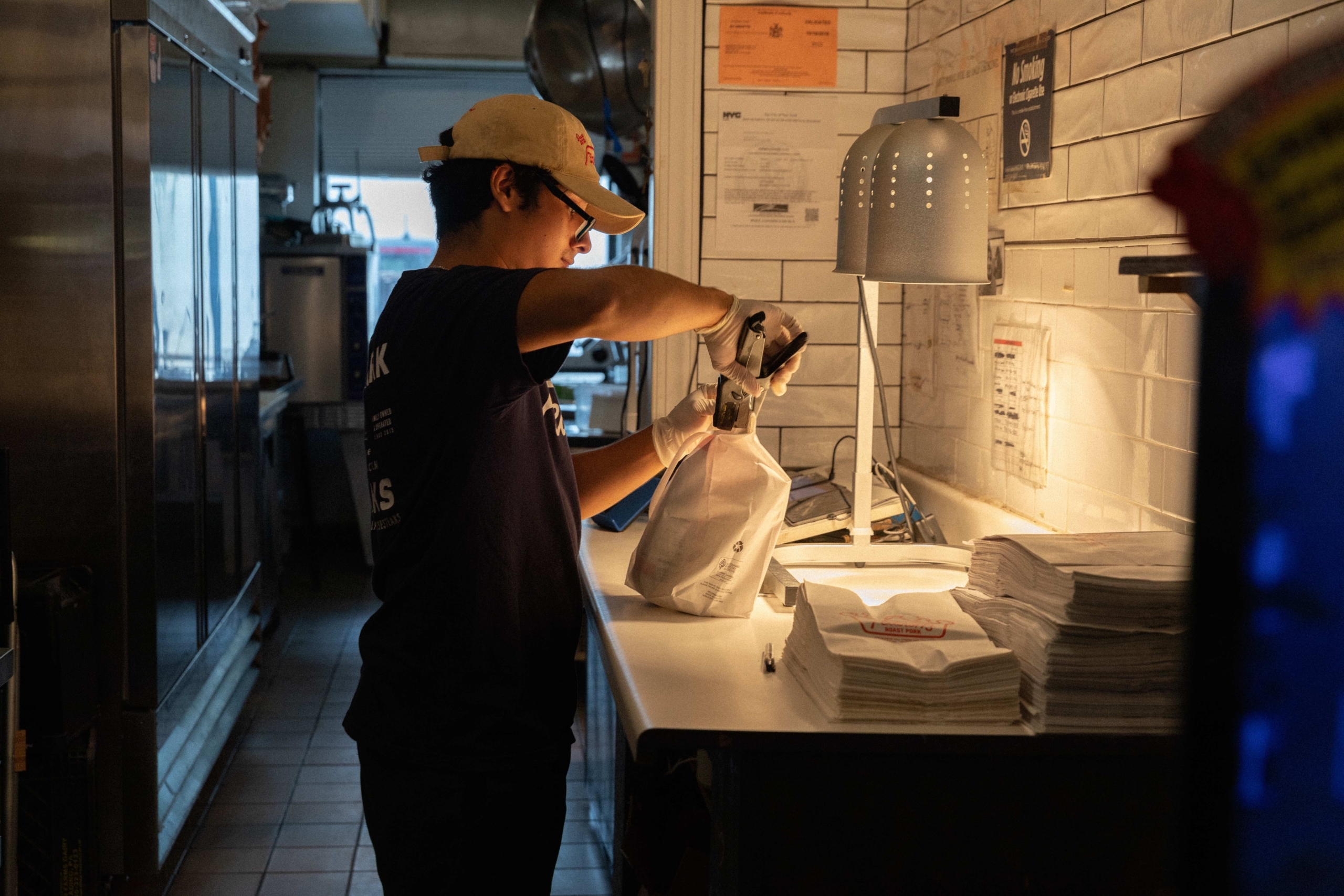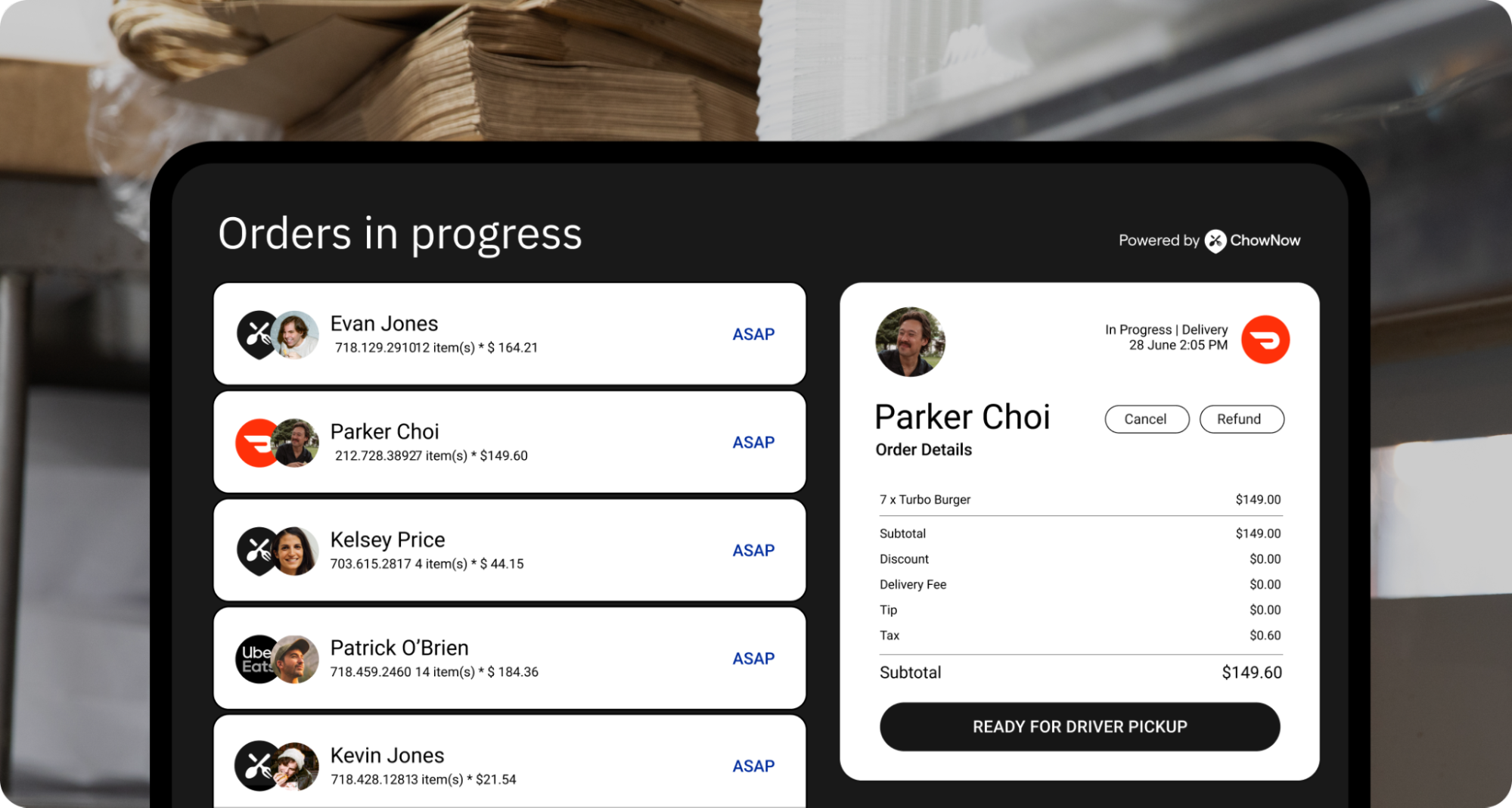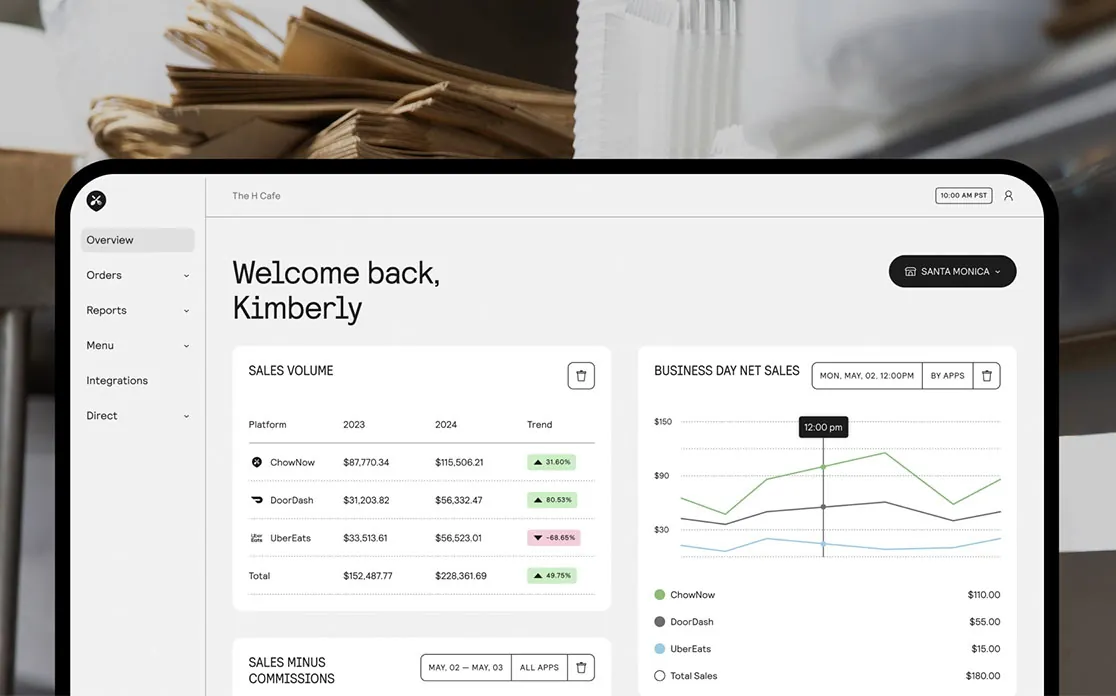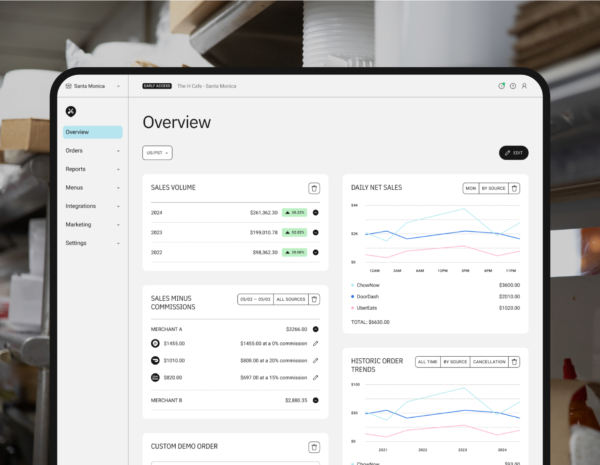5 Common Operational Inefficiencies in Restaurants (And How to Fix Them)

Every restaurant faces operational challenges—even with a great menu and a talented team, bottlenecks can slow service, frustrate customers, and cut into profits.
A single misstep—like a delayed order or a system glitch—can throw off an entire shift. Staff scramble, customers grow impatient, and suddenly, a busy night turns into chaos.
Instead of focusing on growth, restaurant operators spend their time fixing problems that shouldn’t exist in the first place.
But it doesn’t have to be this way. Many of these issues come down to outdated processes, disconnected technology, and a lack of real-time insights.
In this article, you’ll learn:
- How to streamline service to meet the demand for speed and convenience
- The best way to manage orders from multiple platforms without chaos
- How to leverage data and technology to improve operations and customer retention
Let’s dive into the biggest operational problems restaurants face—and, more importantly, how to fix them.
1. Guest Expectations for Speed and Convenience Keep Rising
The Problem:
Customer expectations are always evolving, but in the last several years they have changed dramatically, and speed and convenience are leading the charge.
Whether they’re grabbing takeout, dining in, or ordering delivery, diners don’t have patience for long waits or clunky systems. With the average American growing impatient after just 29 minutes of waiting for their food delivery, operators need to move quickly.
A slow experience isn’t just frustrating—it’s a reason to go somewhere else next time.
At the same time, staff can only move so fast. When they’re stuck taking phone orders, manually inputting tickets, or handling a constant stream of in-person requests, delays are inevitable.
The result?
Overworked employees and impatient customers.
The Solution:
Restaurants need systems that work with them, not against them.
Mobile-friendly ordering, self-service kiosks, and pre-ordering options give guests more control over their experience while reducing pressure on staff.
The easier it is for customers to place orders and receive their food, the smoother operations run.
This isn’t just about speed—it’s about keeping customers happy and giving your team the tools they need to work efficiently.
2. Managing Orders Across Multiple Platforms is a Nightmare
The Problem:
Anyone who’s tried to manage multiple third-party platforms on a busy night knows this problem all too well—with multiple systems running independently, staff are forced to juggle tablets, manually enter orders into the POS, and scramble to keep everything running smoothly.
The more platforms in play, the harder it becomes to ensure accuracy, and when things slip through the cracks, the consequences are immediate.
Missed orders, incorrect items, and delayed pickups create a frustrating experience for customers and add unnecessary stress for staff.
A guest placing an online order might expect their food to be ready within 20 minutes, but if the order never made it to the kitchen because a tablet notification was overlooked, they’ll be stuck waiting.
Meanwhile, third-party drivers show up for deliveries that aren’t ready, causing delays across multiple orders, and staff members, already stretched thin, struggle to keep everything under control.
The end result is a system where everyone is working harder than they should be, yet the overall efficiency and customer experience suffer.
The Solution:

Using an order aggregation system eliminates the need to constantly monitor multiple tablets, manually enter tickets, and double-check every order.
Instead of forcing staff to juggle different platforms, these tools integrate all online and third-party orders into a single system that syncs directly with the POS, ensuring that every order is processed in the same streamlined workflow.
This reduces the likelihood of mistakes, prevents orders from getting lost, and allows the kitchen to focus on fulfilling orders efficiently rather than spending valuable time sorting through different platforms.
By centralizing online orders, restaurants can reduce unnecessary friction and keep service moving along smoothly, even during peak hours.
Staff members aren’t constantly fighting against the system, and customers get their orders faster and more accurately.
To learn more about order aggregation, read our article on How to Simplify Order Management Across Multiple Platforms.
3. Inconsistent Data Makes Decision-Making Harder
The Problem:
Running a restaurant requires constant decision-making.
How much staff do you need on a given night?
Which menu items are actually profitable?
Is your latest promotion bringing in more customers?
Without reliable data, these decisions are just educated guesses, and operators are left piecing together reports from multiple sources.
Sales numbers come from the POS, online orders live across third-party platforms, and labor costs are locked in scheduling software.
By the time all the data is pulled together, it’s either outdated, inconsistent, or too disconnected to be useful.
This lack of visibility makes it easy to overstaff on slow nights or cut too many employees during a rush.
A dish might be one of the most profitable items on the menu, but without clear reporting, it could be overlooked in favor of something less effective.
Marketing campaigns run, money is spent, and yet it’s unclear whether those efforts are actually driving more orders or just draining the budget.
The Solution:

While there is no single system that captures everything, operators can take steps to centralize their more important data.
For example, a robust online ordering platform should offer a centralized reporting dashboard that compiles digital sales into a single view.
Instead of flipping between third-party apps, restaurant owners can see order trends, customer behavior, and takeout and delivery revenue all in one place.
With better visibility, decision-making becomes more strategic.
Restaurants can adjust staffing levels based on real demand, identify their most profitable menu items, and put marketing dollars behind what actually drives revenue.
When key data is accessible and easy to interpret, operators can focus less on guesswork and more on running a profitable business.
4. POS Systems That Don’t Sync with Online Orders Create Chaos
The Problem:
When a restaurant’s online ordering system doesn’t integrate with its POS, service slows down, and mistakes pile up.
Staff are forced to manually enter online orders, taking valuable time away from customers and increasing the risk of errors.
An order might be mistyped, causing the kitchen to prepare the wrong dish, or a staff member could overlook an incoming ticket altogether, leaving a customer wondering why their food never arrived.
Even when orders are processed correctly, the extra time spent entering them takes attention away from in-person guests, resulting in slower service for everyone.
This disconnect creates unnecessary friction—employees juggle multiple screens, trying to keep up with in-house guests while managing a flood of digital orders.
During peak hours, the system breaks down—tickets get lost, customers grow impatient, and the kitchen struggles to stay organized.
A simple solution, like placing an order online for pickup, turns into a frustrating experience for both staff and guests.
The Solution:
A POS system that integrates directly with online ordering eliminates these inefficiencies.
Instead of requiring staff to input digital orders manually, integrated systems send them straight to the kitchen, just like dine-in tickets.
This not only speeds up service but also reduces the risk of errors and ensures every order is accounted for.
An integrated system also simplifies menu management. Instead of updating menus separately across multiple ordering platforms, restaurants can make changes in one place and have them reflected everywhere, guaranteeing consistency in pricing, availability, and item descriptions.
This prevents customers from ordering unavailable items and reduces confusion between front-of-house staff and the kitchen.
With a seamless connection between in-person and digital transactions, restaurants can operate more smoothly.
Staff can focus on hospitality rather than data entry, the kitchen stays on top of incoming orders, and guests receive their food faster—everybody wins.
5. Struggling to Turn First-Time Customers into Regulars
The Problem:
Modern diners need more than great food and service to become repeat customers—there are too many dining options competing for their attention.
With new restaurants popping up, aggressive promotions from big chains, and third-party delivery apps offering endless choices, customers bounce around, always searching for the best deal.
Even if they enjoy their experience, there’s no guarantee they’ll return.
The biggest challenge for restaurants is staying top of mind—many independent operators don’t have a clear strategy to keep guests coming back.
Without a way to re-engage past customers, restaurants risk losing them to competitors who are actively working to earn repeat visits.
The Solution:
Restaurants that take an active approach to customer retention have a better shot at turning first-time guests into regulars.
Digital rewards programs, automated follow-ups, and personalized offers help restaurants build relationships instead of relying on chance.
Something as simple as a thank-you message with a promo code for a future visit can be the gentle push a guest needs to return.
Online ordering platforms with built-in automated email marketing make this process even easier.
If a guest orders takeout, the system can automatically send a follow-up email with a discount for their next order.
Restaurants can also identify their most frequent customers, rewarding them with exclusive perks and future discounts, making them feel valued and more likely to return.
Loyalty isn’t just about great food—it’s about staying on a guest’s radar. With the right tools, restaurants can keep customers engaged, encourage repeat visits, and build a community around their brand.
Turn Operational Problems in Your Restaurant into Opportunities for Growth
Every restaurant has its operational challenges, but by implementing proactive systems, you can streamline workflows, reduce errors, and create a better experience for both staff and guests.
Contact ChowNow to learn how Order Aggregation and Centralized Reporting can make a significant impact on your restaurant’s day-to-day operations.





